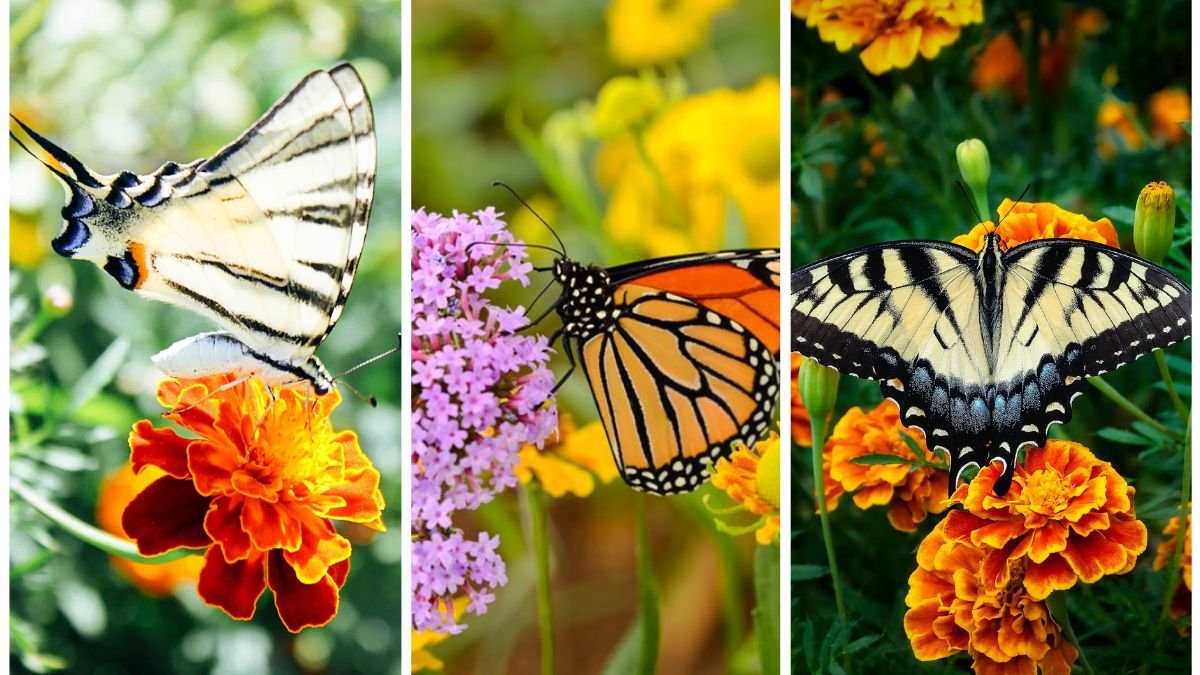In today’s increasingly urbanized world, home gardens play a vital role in supporting local biodiversity. Beyond their aesthetic beauty and therapeutic benefits, gardens can become vibrant ecosystems—welcoming sanctuaries for birds, butterflies, and other pollinators. Creating a garden that attracts birds and butterflies not only contributes to ecological balance but also brings life, color, and movement into your green space.
By carefully selecting specific features and plants, any garden—regardless of size—can become a thriving habitat. This article explores six essential garden features that attract birds and butterflies, backed by ecological principles and practical tips to help you create a living garden teeming with winged visitors.
1. Native Plants: The Cornerstone of Wildlife Gardening
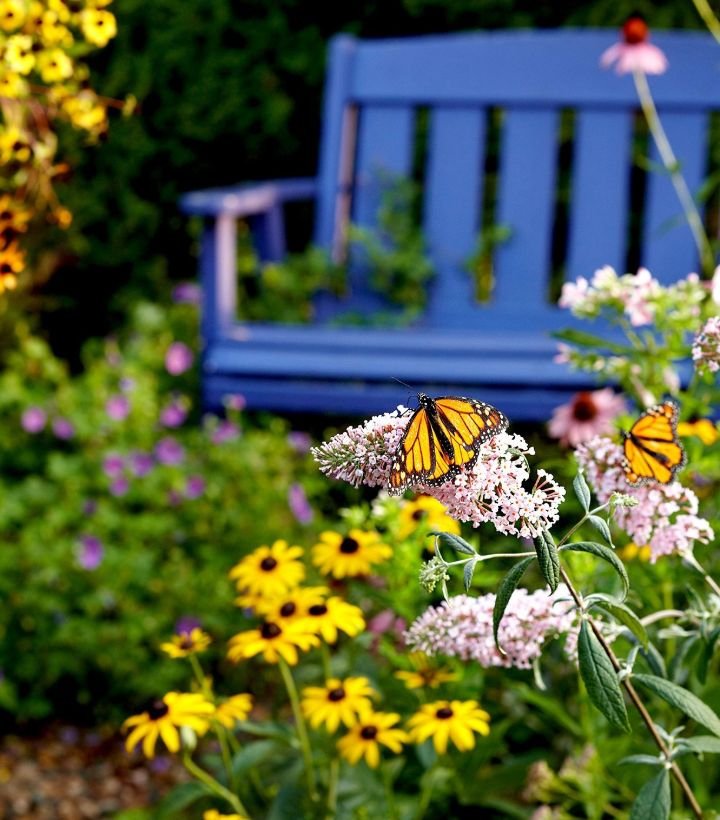
One of the most important ways to attract birds and butterflies is by planting native plants. These plants are naturally adapted to your region’s climate, soil, and local wildlife, making them ideal for feeding and sheltering native species.
Why Native Plants Work:
- Food Source: Many butterflies and moths lay eggs on specific host plants. For example, monarch butterflies rely on milkweed. Likewise, native berries, seeds, and nectar attract birds such as finches, sparrows, and hummingbirds.
- Pest Resistance: Native plants are more resilient to local pests and diseases, reducing the need for chemical pesticides that harm pollinators.
- Habitat Support: Native shrubs and grasses provide nesting materials, cover, and resting spots.
Examples of Native Plants (Region-Specific):
- USA: Purple coneflower, milkweed, goldenrod, black-eyed Susan
- UK: Buddleia (butterfly bush), foxglove, hawthorn, holly
- India: Lantana, hibiscus, tulsi, marigold
Design Tip: Group plants in clusters to help pollinators locate them more easily, and ensure a variety of species bloom throughout the seasons.
2. Water Features: A Vital Attraction for Life
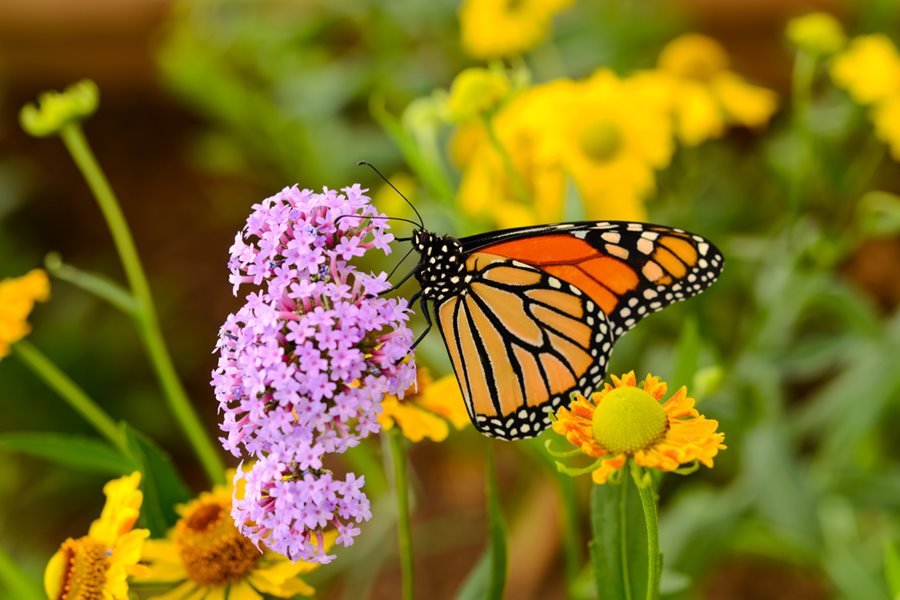
Water is an essential resource for both birds and butterflies. Incorporating a clean, shallow water source in your garden can make it a magnet for wildlife.
Types of Water Features:
- Birdbaths: Simple and elegant, birdbaths provide birds with drinking and bathing water. Choose one with a shallow basin and place it in a shady area.
- Butterfly Puddling Stations: Butterflies drink water and extract minerals from moist soil or sand. Create a shallow dish filled with wet sand or gravel and add a pinch of salt or compost for extra minerals.
- Mini Ponds: A small pond or water container with aquatic plants supports not only birds and butterflies but also frogs, dragonflies, and beneficial insects.
Tips for Water Maintenance:
- Keep water clean and change it regularly to prevent mosquito breeding.
- Add stones or pebbles in the water to give butterflies and small birds safe landing zones.
- Avoid using chlorinated tap water; rainwater is ideal.
A well-maintained water source is one of the quickest ways to bring both birds and butterflies into your garden.
3. Shelter and Nesting Areas: Safe Havens for Wildlife
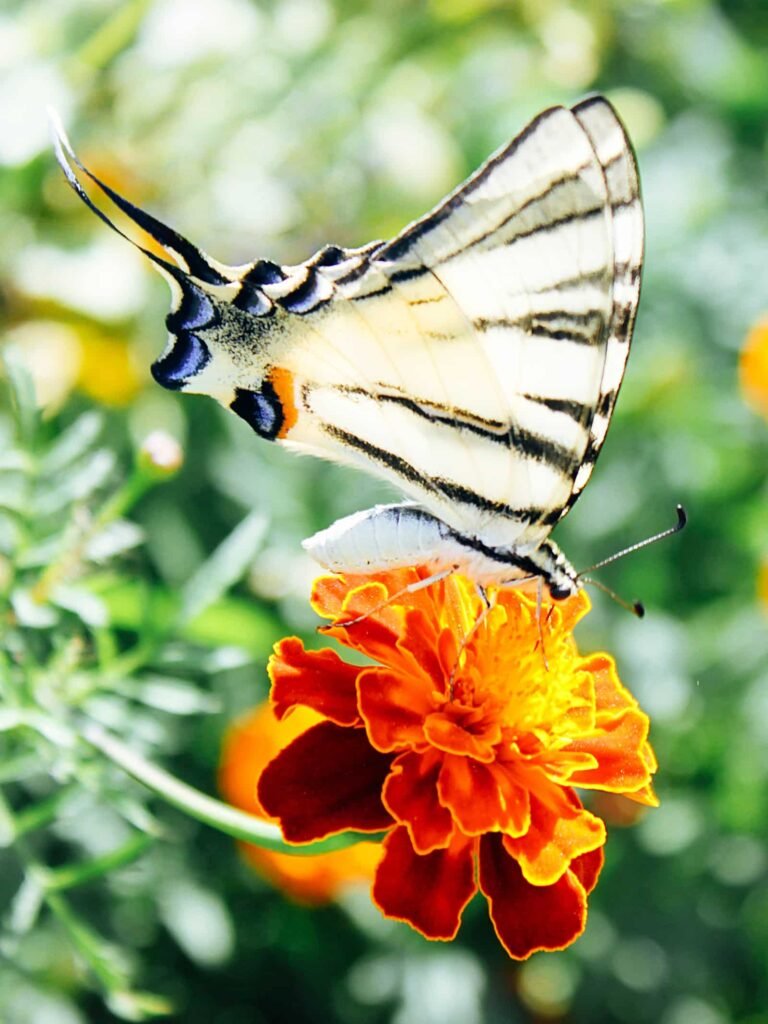
To make birds and butterflies feel at home, your garden needs to offer more than just food and water—it must provide shelter and nesting opportunities.
For Birds:
- Nest Boxes: Install birdhouses appropriate for local bird species. Place them high enough to avoid predators and include proper drainage and ventilation.
- Shrubs and Hedges: Dense vegetation offers protection from predators and harsh weather. Species like holly, privet, and dogwood are excellent.
- Dead Wood or Brush Piles: These provide nesting material and attract insects that serve as bird food.
For Butterflies:
- Taller Grasses: Grasses provide cover and egg-laying opportunities.
- Overwintering Sites: Some butterflies hibernate under leaf litter, bark, or in sheltered corners. Leave a part of your garden undisturbed during fall and winter.
- Windbreaks: Plant hedges or install screens to reduce wind, creating a comfortable microclimate for delicate butterflies.
By offering safe spaces, your garden becomes more than just a rest stop—it becomes a habitat.
4. Nectar-Rich Flowers: Feeding Stations in Bloom
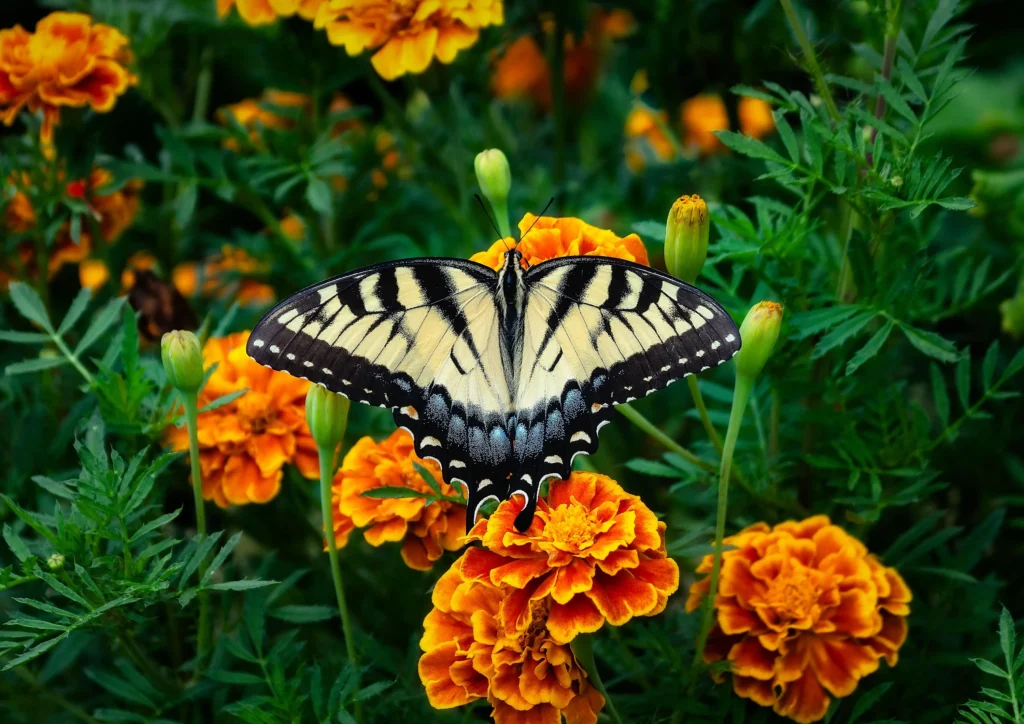
Butterflies are drawn to brightly colored, nectar-rich flowers, while birds—especially hummingbirds—are attracted to tubular blooms with high sugar content.
Nectar Flower Guidelines:
- Color Matters: Butterflies prefer red, yellow, orange, pink, and purple blooms.
- Open Flowers: Choose varieties with open, accessible centers for easy feeding.
- Sequential Blooming: Plant flowers that bloom at different times to provide nectar from early spring to late fall.
Top Nectar Plants:
- Butterflies: Zinnia, cosmos, butterfly bush, verbena, lantana
- Birds: Trumpet vine, bee balm, fuchsia, cardinal flower
Avoid double-flowered hybrids, which often lack nectar and pollen. Stick to single-blooming, native species whenever possible.
5. Avoiding Chemicals: Creating a Safe Environment

Many well-meaning gardeners unintentionally harm the creatures they hope to attract by using chemical pesticides, herbicides, or synthetic fertilizers.
Why Chemicals Are Harmful:
- Insecticides: Kill caterpillars (which butterflies come from) and the insects that birds eat.
- Herbicides: Destroy native weeds and wildflowers that are important food sources.
- Fertilizers: Alter soil chemistry, affecting plant health and the ecosystem.
Eco-Friendly Alternatives:
- Companion Planting: Grow pest-repellent plants like basil, marigold, or garlic near susceptible species.
- Manual Pest Control: Remove pests by hand or use neem oil and insecticidal soap.
- Natural Fertilizers: Use compost, vermicompost, or organic mulch to feed your soil and plants.
A healthy, chemical-free garden is essential for supporting a diverse and thriving ecosystem.
6. Fruit and Seed-Bearing Plants: A Natural Buffet
Beyond nectar, many birds rely on berries, fruits, nuts, and seeds as part of their daily diet. Including these plants adds another layer of attraction and sustenance for a broader variety of bird species.
Best Plants for Birds:
- Berry Bushes: Elderberry, mulberry, viburnum, serviceberry
- Seed Plants: Sunflowers, coneflowers, thistle, goldenrod
- Fruit Trees: Small varieties of apple, pear, or fig trees (especially for larger gardens)
- Grasses: Ornamental grasses and native seed heads attract ground feeders like sparrows and doves.
Let some of your flowers go to seed at the end of the season. This not only attracts birds but also promotes self-seeding for next year’s bloom.
Conclusion: Designing for Delight and Biodiversity
A bird- and butterfly-friendly garden is not just about beauty—it’s about balance, sustainability, and supporting nature where we live. By incorporating these six features—native plants, water sources, shelter, nectar-rich flowers, chemical-free practices, and fruit-bearing plants—your garden becomes a dynamic, living space teeming with life.
Whether you have a sprawling backyard or a small balcony, it’s possible to design a space that contributes to local ecosystems while providing daily joy. The flutter of butterfly wings, the chirping of birds, and the natural rhythm of pollinators at work can transform your garden into an inspiring and restorative environment.
In a time when pollinators and native species face increasing threats from habitat loss and climate change, your garden can be part of the solution. By turning your outdoor space into a haven for birds and butterflies, you not only enhance its beauty—you actively help preserve biodiversity for generations to come.
